How do you choose which tomatoes to grow in your garden?
Here’s a suggestion: Make a list of how you and those in your household enjoy tomatoes. Consider the 5-S’s— salads, sandwiches, sauces, soups., and salsa. There are tomatoes perfect for each of these uses.
Plant 1 to 3 tomato plants for each household member for fresh eating. Plant 6 tomato plants for each household member for sauces and canning.
Here are tomatoes to consider:
Salad tomatoes
There are two choices when it comes to salad tomatoes. Choose large, plump beefsteak tomatoes to soak up the flavor or vinaigrette and add texture to a salad. Choose small cherry tomatoes for color, sweetness, and a tomato that will hold its shape.
- Brandywine: exceptional rich flavor, succulent; pink, creamy flesh. Amish heirloom; open-pollinated; indeterminate; 80 days.
- Costoluto Fiorentino: high sugar and high acid content make for a terrific tomato taste. Italian heirloom; open-pollinated; indeterminate; 80 days.
- German Pink: meaty, almost seedless. German heirloom; open-pollinated; indeterminate; 85 days.
- Golden Gem: high sugar content, golden yellow. Chinese hybrid; indeterminate; 65 days.
- Marmande: full, rich flavor. French heirloom; open-pollinated; semi-determinate; 70 days.
- Red Cherry: sweet flavor. Heirloom; open-pollinated; semi-determinate; 65 days.
- Riesebtraube: big tomato taste, grape-sized fruit. German heirloom; open-pollinated; 80 days.
Sandwich tomatoes
Choose big, meaty beefsteak tomatoes for sandwiches and hamburgers. These tomatoes are wider than they are long and are perfectly suited for slicing.
- Beefsteak (also called Red Ponderosa and Crimson Cushion): mild and sweet flavor, thick flesh. American heirloom; open-pollinated; indeterminate; 90 days.
- Box Car Willie: delicious tomato flavor. American heirloom; open-pollinated; indeterminate; 80 days.
- Cherokee Purple: Sweet, rich, delicious flavor. Tennessee heirloom; open-pollinated; indeterminate; 80 days
- Hillbilly: Sweet, fruity flavor. West Virginia heirloom; open-pollinated; indeterminate; 85 days.
- Mortgage Lifter: sweet flavor and meaty. West Virginia heirloom; open-pollinated; indeterminate; 85 days.
Salsa tomatoes
For fresh salsa, you will want a plump, meaty tomato.
- Big Boy: meaty flesh, great flavor. Hybrid; indeterminate; 78 days.
- Druzba: balanced sweet and tart flavor, smooth flesh. Bulgarian heirloom; open-pollinated; indeterminate; 80 days.
- Eva’s Purple Ball: sweet and juicy flavor; smooth, pink flesh. German heirloom; open-pollinated; indeterminate; 70 days.
- Mule Team: bright red, excellent flavor, and texture, long harvest. American heirloom; open-pollinated; indeterminate; 80 days.
- Stupice: sweet, satisfying tomato flavor and early to harvest. Czechoslovakian heirloom; open-pollinated; indeterminate; 52 days.
Soup tomatoes
Tomatoes for soup are almost always pureed; look for ripeness and deep flavor. Add cherry tomatoes for extra sweetness.
- Principe Borghese: meaty with little juice and few seeds. Italian heirloom; open-pollinated; determinate; 75 days.
- San Marzano: mild flavor, meaty texture. Italian heirloom; open-pollinated; indeterminate; 80 days.
Sauce tomatoes
Choose a ripe plum tomato that has a good balance between flesh and juice. You will also want a savory tomato. San Marzano is the Italian favorite for sauces.
- Juliet: Full tomato flavor—high in both acid and sugar. All-America Selection hybrid; indeterminate; 60 days.
- San Marzano: mild flavor, meaty texture. Italian heirloom; open-pollinated; indeterminate; 80 days.
Best tomato growing tips: How to Grow Tomatoes.
If you’ve got tomato questions turn to The Tomato Grower’s Answer Book.
Two or three tomato plants for each person in the household should give you just the right amount for fresh eating.
Good Products for Growing Tomato Family Crops:
- Espoma Garden Tone 3-4-4 Fertilizer
- Epsom Salt Plus Plant Nutrients Magriculture
- Neem Bliss 100-% Cold Pressed Neem Oil
- PyGanic Botanical Insecticide
- Monterey BT Caterpillar Killer
Which tomatoes should you grow? Here is a roundup of the most popular, easiest-growing, and easiest-to-find tomato varieties. Keep this list handy when ordering seeds or going to the garden center. This list should help you find the right tomatoes for you and your family’s needs, and it will help you time the planting of tomatoes for the coming season.
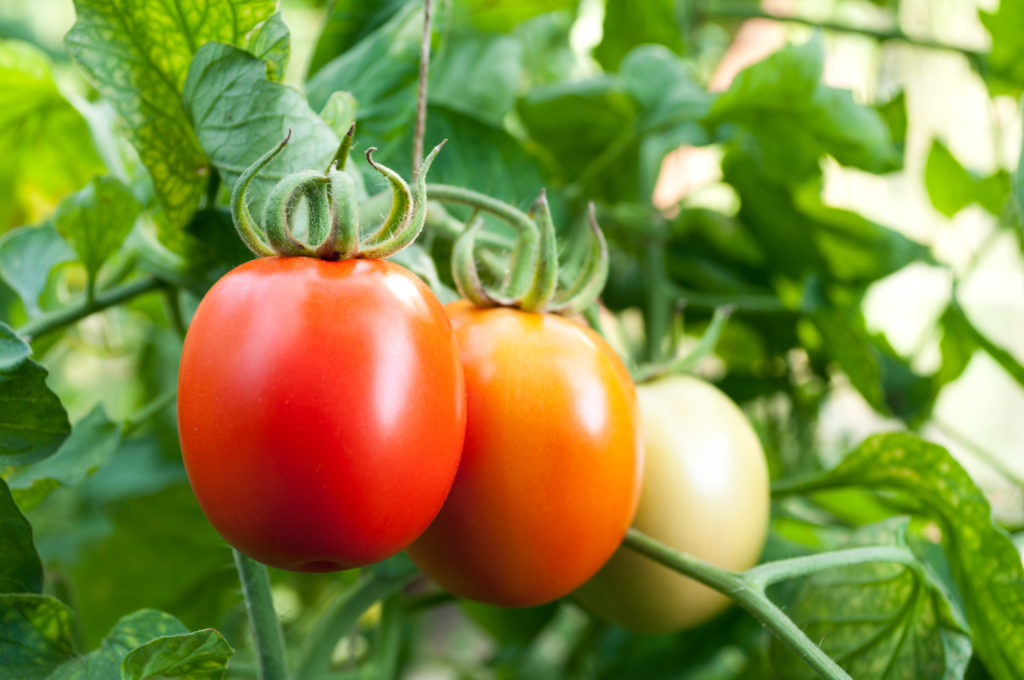
Tomato-growing vocabulary to know
To use the lists below, here are some abbreviations and explanations:
Determinate and indeterminate tomatoes
Determinate (D) varieties produce bushy plants just a few feet tall that tend to come to harvest all at the same time–usually over a period of about 4 weeks. Determinate cultivars are a good choice in short-season regions because they tend to ripen more quickly.
Indeterminate (I) varieties are vining plants that keep on growing, producing new clusters of flowers, and fruiting until the first frost. These plants tend to be continuous producers but they can grow unwieldy and will require staking, caging, or trellis growing.
Growing suggestion. Where the growing season is long, plant determinate tomatoes for a quick early harvest and also plant late-maturing indeterminate tomatoes for a continuous supply through the summer.
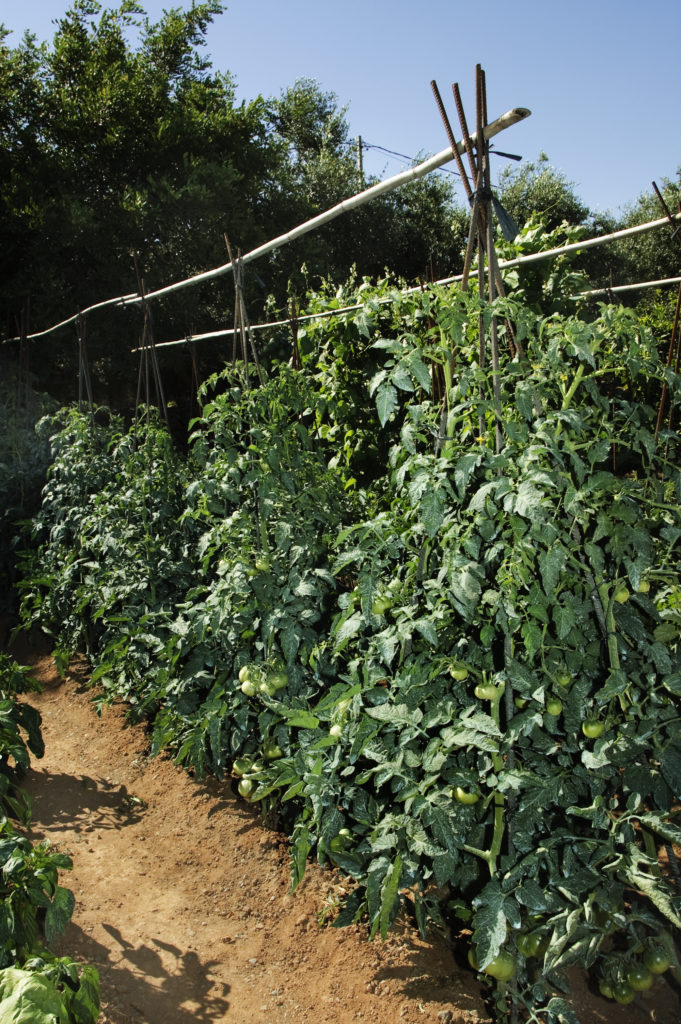
Days to maturity
The days listed in these charts are the number of days to maturity or harvest from the time of seed sowing. But this time is under optimal seed starting conditions–meaning a soil germination temperature of 85°F. If you are sowing seed in the garden or in less than optimal circumstances add 5 to 10 days or more to this number.
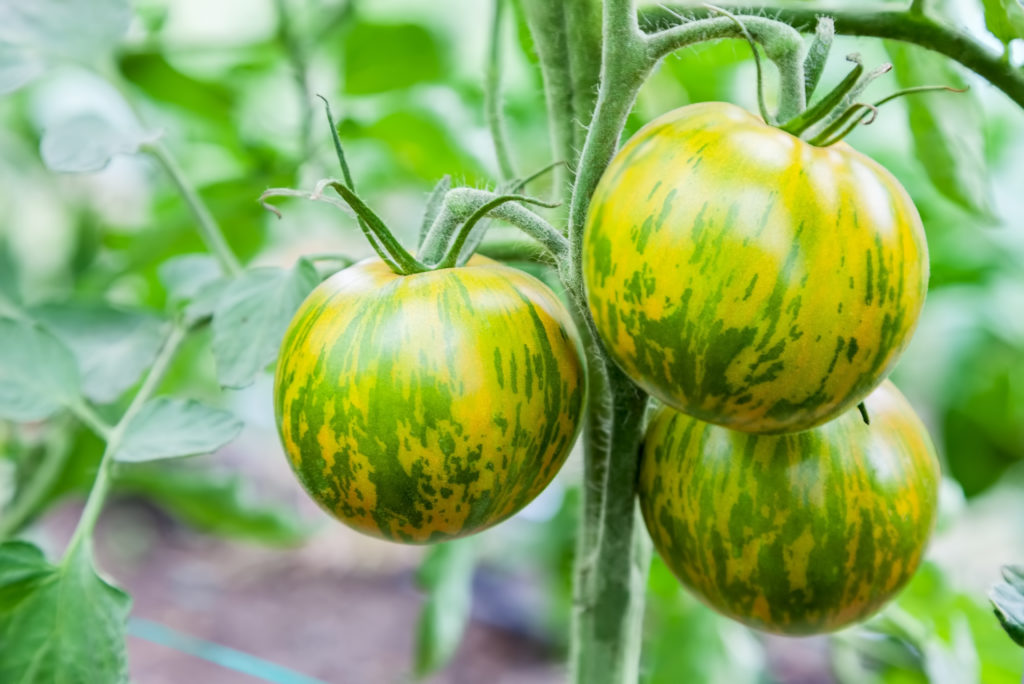
Open-pollinated (OP) or hybrid (H) tomatoes
Look for the note in the charts next to the varietal name. Tomatoes can be divided into two basic types: open-pollinated and hybrid. Open-pollinated (OP) tomatoes pollinate themselves and produce offspring just like themselves in looks and taste. Hybrid (H) tomatoes are a cross between two varieties that can occur on purpose or by accident. Tomato breeders cross-pollinate differing varieties to create plants with specific attributes. The difference between open-pollinated and hybrid is important for several reasons; one important consideration for you is if you intend to save the seed from one or two of your tomatoes at the end of the season and hope to use them next year to start a new garden. You can with open-pollinated seed; you can’t with hybrid seed. The hybrid seed will not grow true.
Notable among open-pollinated tomato varieties are heirloom tomatoes or old-fashioned tomatoes. Heirloom tomatoes have been around for generations and include dozens and dozens of plants that have very desirable natural mutations or traits. Heirloom tomato varieties are often well-suited to a particular climate or region.
Disease desistance
Disease-resistant varieties are identified by a letter code which will be found on seed packets or transplant identification stakes: “V” (verticillium wilt), “F” (fusarium wilt), “N” (nematodes–microorganisms that cause root cankers); and “T” (tobacco mosaic virus). Resistant varieties are noted after the variety name of each tomato in the chart below.
Using abbreviations
How do you plan to use the tomato in the kitchen? Here are ways: C=Container or miniature variety; these are often used as a salad or snacking tomatoes. S=Slicing or fresh eating tomatoes; use these on sandwiches. P=Paste or cooking tomatoes.
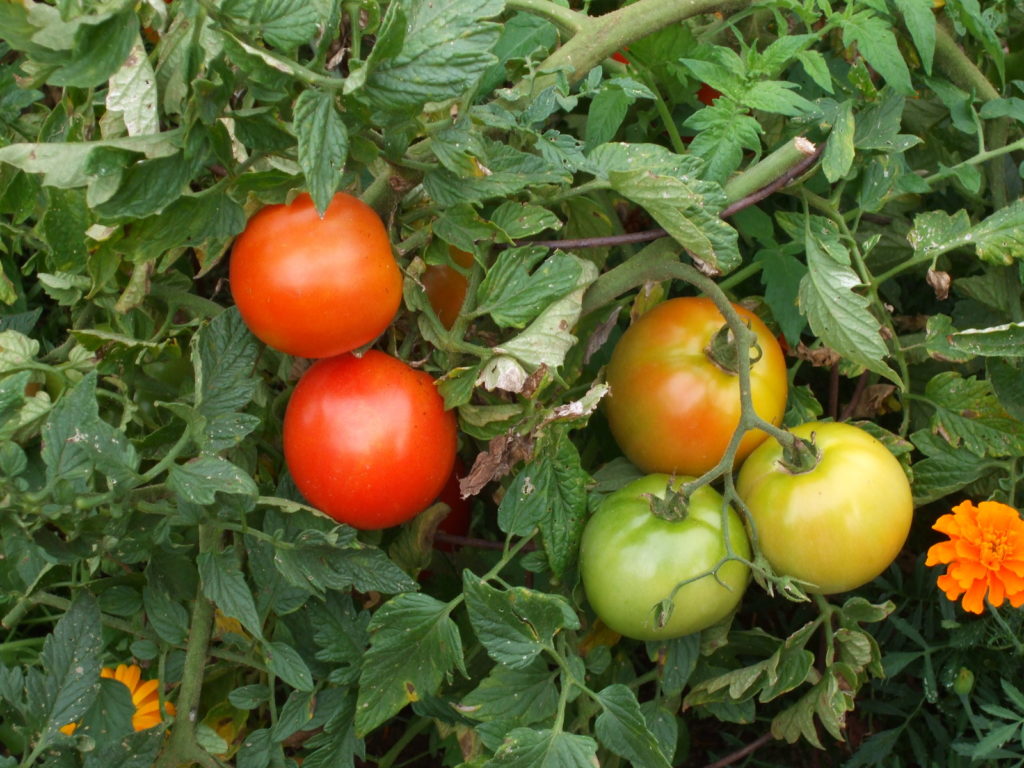
Early to harvest tomato varieties (50-65 days)
Early harvest or first-early tomatoes are more compact than main-season tomato varieties. Many of these cultivars are suited to short-growing season regions or cool-summer regions. Generally, these tomatoes will be small to medium-sized.
| Early-Harvest Variety | D/I | Days | Color | Use | Comments |
|---|---|---|---|---|---|
| Burpee’s Pixie (H) | D | 60 | Red | C | 16-inch plants |
| Bush Beefsteak (OP) | D | 62 | Red | S | Large, firm |
| Champion (H) VFNT | I | 65 | Red | S | Smooth, large |
| Cherry Grande (H) VF | D | 58 | Red | C | Large cherry tomato |
| Early Cascade VF (H) | I | 61 | R | S | Salads, sandwiches |
| Early Girl (H) VFF | I | 62 | Red | S | Favorite early crop |
| Earliana (OP) | I | 65 | Red | S | Mild flavor |
| Earlirouge (OP) | D | 65 | Red | S | Sets fruit in extreme temperatures |
| Glacier (OP) | D | 54 | Red | S | Good flavor |
| Gold Nugget (OP) | D | 60 | Gold | C | Nearly seedless |
| Ida Gold (OP) | D | 55 | Orange | S | Cold tolerant |
| Juliet (H) | I | 62 | Red | P | AAS winner |
| Marmande (OP) VF | D | 65 | Red | S | French gourmet |
| New Yorker (OP) V | D | 64 | Red | S | Small, compact, early |
| Orange Pixie (H) | D | 52 | Orange | C | 1-to-2-inch fruits |
| Oregon Spring (OP) | D | 60 | Red | S | Adapted to cool regions |
| Pilgrim (OP) | D | 65 | Red | S | Compact, good flavor |
| Quick Pick (H) VFNT | I | 60 | Red | S | Good flavor |
| Red Currant (OP) | I | 65 | Red | C | Small, big flavor |
| Siberia (OP) | D | 50 | Red | S | Tolerates cold |
| Small Fry (H)VFN | D | 60 | Red | C | Cherry-size 40 to cluster |
| Stupice (OP) | I | 55 | Red | S | Cool, short season |
| Sub-Arctic Maxi (OP) | D | 52 | Red | S | Very cold tolerant |
| Sun Gold (H) | I | 65 | Red | C | Sweet and early |
| Super Chief (H) | D | 60 | Red | S | Very early; large fruits |
| Sweet Chelsea (H) | I | 65 | Red | C | Drought tolerant |
| Taxi (OP) | D | 64 | Yellow | S | Compact |
| Tigerella (Mr. Stripey) (OP) | I | 56 | Orange-Yellow | S | Tangy flavor |
| Tiny Tim (OP) | D | 55 | Red | C | Grow in a hanging basket |
| Whippersnapper (OP) | D | 52 | Dark Pink | C | Extra early |
Good Products for Raised Bed Growing at Amazon:
- Cedar Raised Bed 4×8
- Elevated Cedar Planter 4×2
- Walk-In Greenhouse Tunnel 15x7x7
- Row Cover for Freeze Protection 10×30
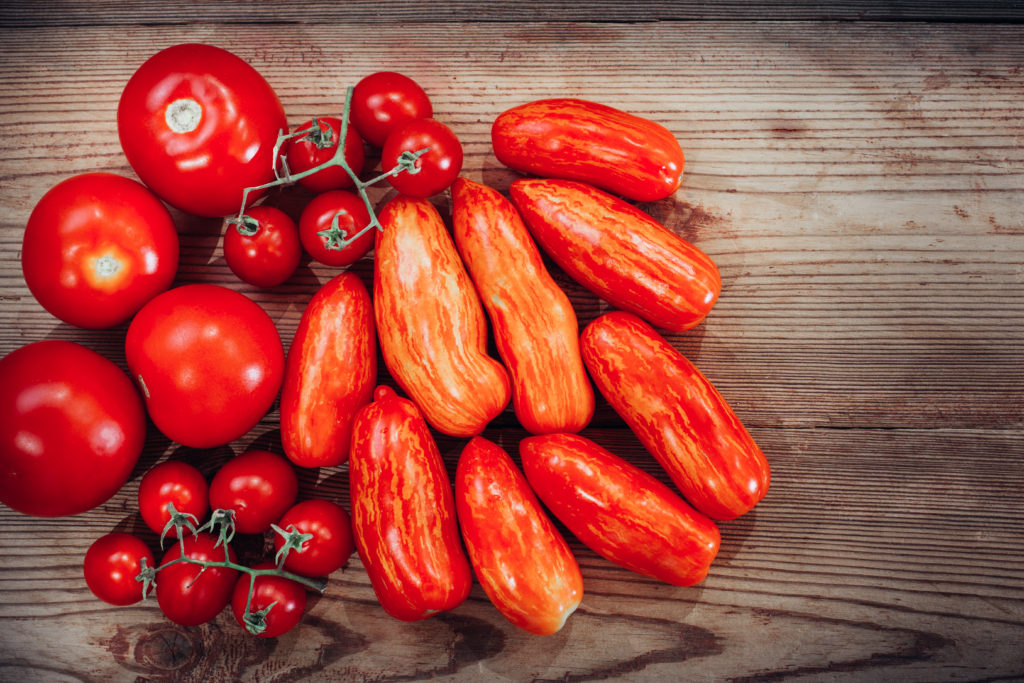
Midseason or main-crop tomato varieties (65-80 days)
Main-crop or mid-season tomato varieties generally bear larger fruit. These tomatoes are well-suited for summer growing and are very good producers. Many can be pruned and trained to stakes or grown in wire cages or on trellises.
| Main-Crop Variety | D/I | Days | Color | Use | Comments |
|---|---|---|---|---|---|
| Abraham Lincoln (OP) | I | 78 | Red | S | Flavorful old-timer |
| Bellstar (OP) | D | 70 | Red | P | Large plum type |
| Better Boy VFV (H) | I | 72 | Red | S | Flavorful, firm |
| Big Boy (H) | I | 78 | Red | S | Meaty, long season |
| Black Prince (OP) | I | 70 | Dark red | S | Compact, tasty and juicy |
| Bonny Best (OP) | I | 70 | Red | S | Old-fashion favorite |
| Brandywine (OP) | I | 85 | Pink-red | S | Heirloom; superb flavor |
| Burpee’s Big Girl (H) VF | I | 78 | Red | S | Crack-resistant |
| Burpee’s Supersteak (H) VFN | I | 80 | Red | S | Rich flavor, beefsteak |
| Burpee’s VF (H) | I | 72 | Red | S | Firm, meaty |
| Campbell 1327 (OP) | D | 75 | Red | S | Firm, smooth |
| Celebrity (H) VFNT | D | 70 | Red | AAS winner | |
| Cherokee Purple (OP) | I | 72 | Pink-purple | S | Multicolor flesh, southern heirloom |
| Creole (OP) | I | 72 | Red | S | Southern favorite |
| Dutchman (H) | I | 80 | Dark pink | S | Low-acid beefsteak |
| Evergreen (OP) | I | 72 | Green | S | Green flesh, mild flavor |
| First Lady (H) | I | 66 | Red | S | Disease resistant |
| Floramerica (H) VFN | D | 70 | Red | S | AAS winner |
| Gardener’s Delight (OP) | D | 65 | Red | C | Sugar sweet |
| Glamour (OP) | I | 74 | Red | S | Crack-resistant |
| Golden Boy (H) | I | 75 | Yellow-orange | Good grower | |
| Heat Wave (H) VFF | D | 68 | Red | S | Heat tolerant |
| Heinz 1350 (OP) VF | D | 75 | Red | P | Canning variety |
| Homestead 24 (OP)F | D | 82 | Red | S | Southern performer |
| Husky Gold (H) VF | I | 70 | Gold | S | AAS winner |
| Jet Star (H) VF | I | 72 | Red | S | Flavorful, low acid |
| Lemon Boy (H) | I | 72 | Yellow | S | Mild flavor |
| Marglobe (OP) F | D | 75 | Red | S | Smooth, firm |
| Monte Carlo (H) VFN | I | 75 | Red | S | Smooth, long season |
| Mortgage Lifter (OP) VFN | I | 85 | Red | S | Southern beefsteak |
| Park Whopper (H) VFNT | I | 65 | Red | S | Good disease resistance |
| Patio Hybrid (H) F | D | 70 | Red | C | Good yield, favorite |
| Persimmon (OP) | I | 80 | Orange | S | Fine flavor |
| Ponderosa (OP) | I | 90 | Pink | S | Beefsteak |
| Porter (OP) | I | 65 | Red | S | Heat resistant |
| Quick Pick (H) | I | 79 | Red | S | Heavy yields |
| Red Pear (OP) | I | 70 | Red | S | Small fruited |
| Roma (OP) VF | D | 75 | Red | C | Standard paste variety |
| Rutgers (Jersey) (OP) | I | 74 | Red | P | Canning favorite |
| Small Fry (H) VF | D | 72 | Red | C | Heavy yields, compact |
| Solar Set (H) | D | 70 | Red | S | Heat tolerant |
| Sunray (OP) F | I | 80 | Yellow-orange | S | Widely grown |
| Super Fantastic VF (H) | I | 70 | Red | S | Smooth, long producer |
| Supersonic (H) VF | D | 79 | Red | S | All-around performer |
| Super Sweet 100 (H) | I | 70 | Red | S | Sweet and productive |
| Sweet Million (H) FN | I | 60 | Red | S | Improved Sweet 100 |
| Sweet 100 (H) | I | 65 | Red | C | Big yields |
| Terrific (H) VFN | I | 70 | Red | S | Meaty, long season |
| The Juice | D | Red | PS | For canning or juice | |
| Valencia (OP) | I | 75 | Orange | S | Maine heirloom |
| Veepick | D | Red | P | Plum; peels easily | |
| White Beauty | I | White | S | Mild and sweet | |
| Wonder Boy (H) VFN | I | 80 | Red | S | Heavy producer |
| Yellow Currant (OP) | I | 70 | Yellow | C | Very small |
| Yellow Pear (OP) | I | 76 | Yellow | C | Mild; preserves salads |
| Yellow Plum (H) | I | 70 | Yellow | C | Preserves and salads |
Good Products for Seed Starting Success at Amazon:
- Jump Start Germination Station w/Heat Mat Tray, 72-Cell Pack, Dome
- Espoma Seed Starting Mix
- 200 Count- Jiffy 7 Peat Soil Seed Starting Plugs
- Seed Starter Kit with Humidity Dome (120 Cells Total Tray)
- AgrobriteT5 Fluorescent, 2-Foot, Grow Light System
Late-season tomato varieties (80+ days)
Late-season tomato varieties are long-stayers in your garden. Grow these tomatoes only if you have a generous growing season. Late-season tomatoes tend to be larger and juicier because they take full advantage of the summer season.
| Late-Season Variety | D/I | Days | Color | Use | Comments |
|---|---|---|---|---|---|
| Ace 55 VF (OP) | D | 80 | Red | S | Tart to sweet |
| Arkansas Traveler (OP)F | I | 90 | Red | S | Southern heirloom |
| Beefmaster (H) VFN | I | 80 | Red | S | Meaty, flavorful |
| Beefsteak (OP) | I | 90 | Red | S | Large, delicious |
| Big Rainbow (OP) | I | 102 | Green-red | S | Long season |
| Brandywine (OP) | D | 80 | Pink-red | S | Good flavor |
| Burgess Stuffing (OP) | I | 74 | Red | S | Mild |
| Cal-Ace (H) VF | D | 90 | Red | S | Adapted to arid areas |
| Caro Rich (OP) | D | 80 | Orange | S | Cool climate |
| Delicious (OP) | I | 77 | Red | S | Beefsteak |
| Doublerich (OP) | D | 80 | Red | S | Canner |
| Giant Belgium (OP) | I | 90 | Dark Pink | S | Low acid; large fruit |
| Golden Boy (H) | I | 80 | Yellow | S | Mild flavor |
| Green Grape (OP) | D | 80 | Yellow-green | S | Sweet-tart |
| Green Zebra (OP) | I | 80 | Green-yellow | S | Mild flavor |
| Homestead 24 (OP) F | D | 82 | Red | S | Adapted to the South |
| Oxheart (OP) | I | 86 | Red | S | Old favorite |
| Pineapple (H) | I | 90 | Red-Yellow | S | Striped Heirloom |
| Pink Ponderosa (OP) | I | 90 | Red | S | Meaty, old-timer |
| San Marzano (OP) | I | 80 | Red | P | Mild, meaty; paste-type |
| Super Bush (H) | D | 70 | Red | S | Big yielder |
| Tangerine (OP) | I | 85 | Yellow-Orange | S | Heirloom beefsteak |
Tomato varieties that are naturally sweet
Some tomato varieties are sweeter than others. They naturally develop more sugars which means they will be sweeter than tomatoes which naturally develop more acids. The combination of sugars and acids—there are more than 400 naturally occurring compounds that account for tomato flavor– makes for what is often called “old-fashioned tomato flavor.”
Of the tomatoes that are naturally high in sugars, here are several–both large and small– that you will likely find sweeter than others. If a sweet tomato is what you crave, one of these will likely be for you.
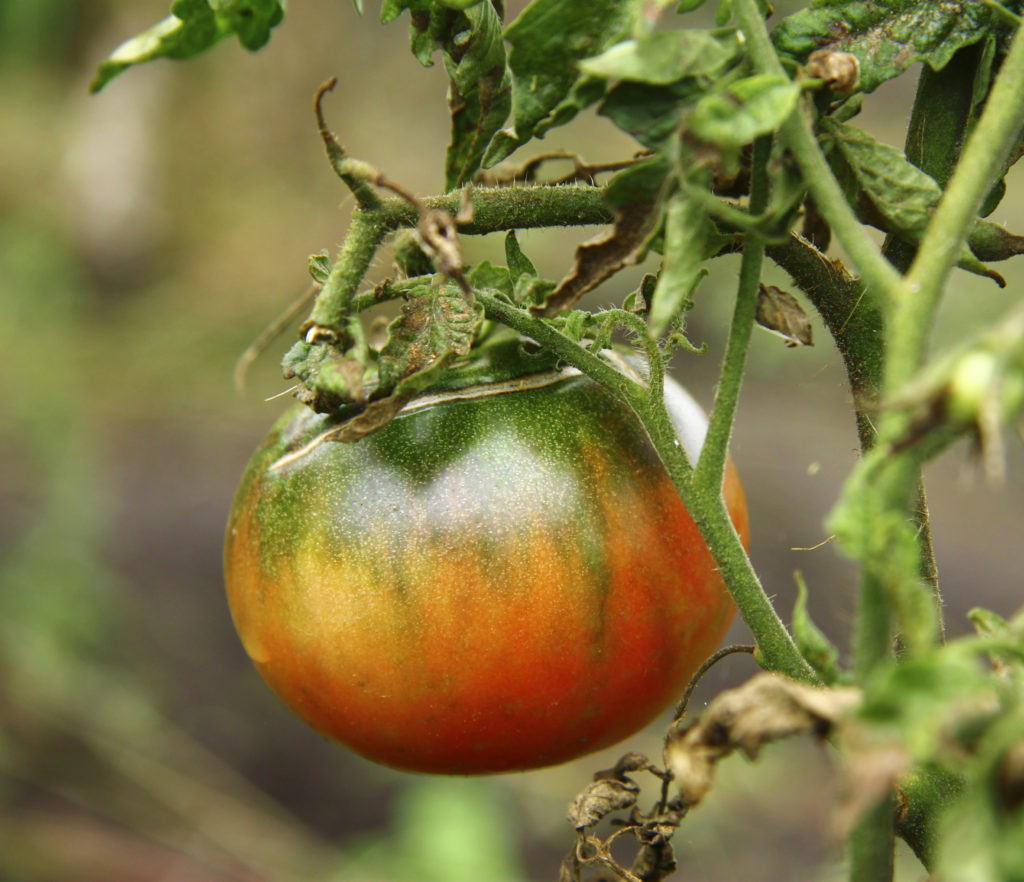
Large sweet tomatoes
- Abraham Lincoln: a bit of old-fashioned acidity flavor well-tempered with sweetness. Heirloom; medium-size; open-pollinated; indeterminate; 77 days to harvest from transplant.
- Ace 55: tart flavor with a sweet aftertaste, lower in acid than other tomatoes. Medium-size; open-pollinated; determinate; 80 days to harvest from transplant.
- Aker’s West Virginia: sweet and rich flavor, delicious. Heirloom; big fruit; open-pollinated; indeterminate; 85 days to harvest from transplant.
- German Johnson: some say this tomato is as sweet as a watermelon. Heirloom; large fruit; open-pollinated; indeterminate; 80 days to harvest from transplant.
- Giant Belgium: sweet flavor in a very large fruit, to 5 pounds. Ohio-native; open-pollinated; indeterminate; 90 days to harvest from transplant.
- Hillbilly: sweet and fruity. West Virginia heirloom; open-pollinated; indeterminate; 85 days to harvest from transplant.
- Red Rocket: sweet-acid blend, smooth and flavorful for early season tomato. Compact growing determinate, open-pollinated; 60 days to harvest from transplant.
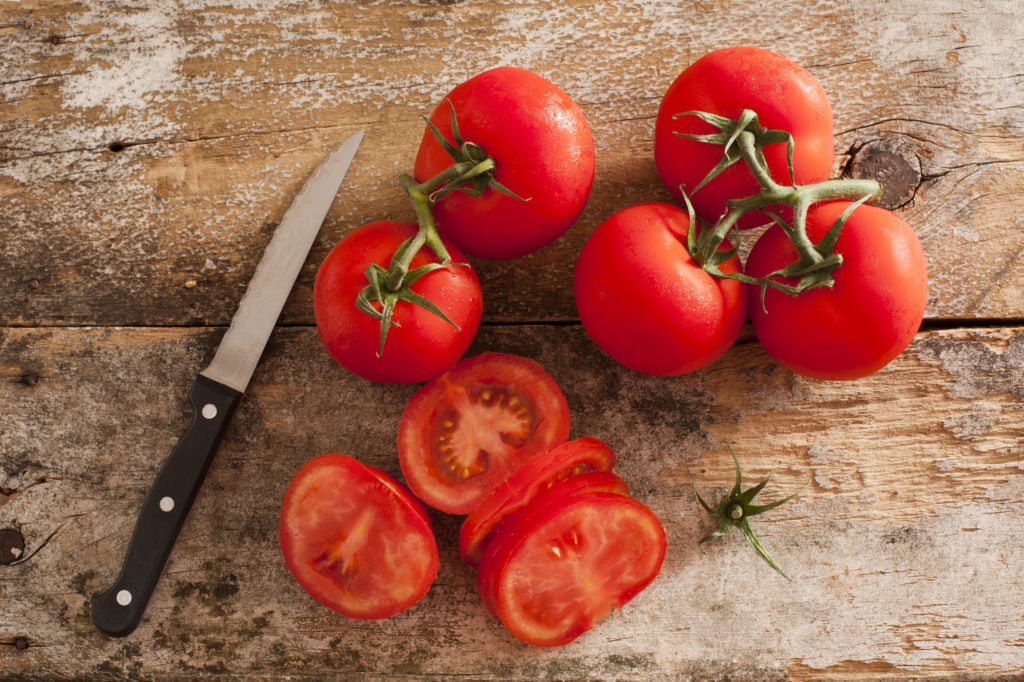
Small sweet tomatoes
- Sweet Treats: sweet and rich. Cherry tomato; hybrid; indeterminate; 70 days.
- Sweet Baby Girl: sweet and flavorful. Clusters of fruit; hybrid; indeterminate; 65 days.
- Sweet Chelsea: extra sweet. Jumbo cherry tomato; hybrid; indeterminate; 67 days.
- Sweet 100: very sweet, abundant until frost. Large cherry; hybrid; indeterminate; 65 days.
- Sweet Million: improved Sweet 100. Hybrid; indeterminate; 65 days.
Tomato varieties for cool weather
The best tomatoes to grow in cool or cold climates are short- to mid-season tomatoes—that is tomatoes that mature in the shortest number of days, 55 to about 75 days from transplanting.
Short- and mid-season tomato varieties commonly require fewer days of heat to ripen fruit and are naturally adapted or have been developed for cool temperatures.
Cool and cold climate regions commonly have short growing seasons; a growing season is the frost-free days between the last frost in spring and the first frost in autumn. Where the growing season is short you want to grow tomatoes that have fewer days to maturity and those that can tolerate chilly temperatures–meaning temperatures in the mid to high 50°sF and 60°sF (15-16°sC). (Tolerate does not mean thrive; tomatoes wherever they are grown demand mostly days in the 70°sF (20°sC to thrive and ripen.)
Tomatoes well adapted to cooler summer regions are also the best choice to grow early in the season and to plant again in mid-summer in warm- or long-growing season regions. Plant these varieties early in spring when temperatures are cool before you plant long-season (80-plus days to maturity) and plant them later to ripen when temperatures are cool.
Wherever tomatoes are grown, they must be protected from frost. When growing tomatoes in cool regions, feed them compost tea weekly for the vigor needed to withstand cool weather.
Here are both hybrid and open-pollinated tomato varieties for cool or cold summer regions:
- Black Prince: open-pollinated, indeterminate, 70 days, red with black shoulders, rich-fruity flavor, from Siberia.
- Bush Beefsteak: open-pollinated, determinate, 62 days, deep red, beefsteak, 8 ounces, compact and prolific.
- Celebrity: hybrid, determinate, 70 days, red, globe, 8-12 ounces, rich tomato flavor, disease and crack resistant.
- Cold Set: open-pollinated, determinate, 65 days, red, 4 inches across, flavorful, from Canada.
- Floramerica: hybrid, determinate, 70 days, red, 7 ounces, does well in cold and hot regions, All-America Selections performance winner.
- Galina’s (Galina): open-pollinated, indeterminate, 75 days, yellow-orange, cherry, 1 inch, from Siberia.
- Glacier: open-pollinated, determinate, 55 days, red, small globe, 2-3 ounces, sweet, juicy; sets fruit well in cold weather.
CompleteTomato Growing Tips at: Tomato Grower’s Answer Book
- Golden Nugget: hybrid, determinate, 60 days, yellow, cherry, 1 inch, very flavorful, disease-resistant, developed by Oregon State University.
- Gregori’s Altai: open-pollinated, indeterminate, 67 days, pink-red, beefsteak, 8-12 ounces, sweet, juicy, from Siberia.
- Grushovka: open-pollinated, determinate, 65 days, pink, egg-shaped, 3 inches long, delicious, from Siberia.
- Husky Gold: hybrid, indeterminate, 70 days, golden, globe, 7 ounces, sweet, flavorful, disease-resistant,
1993 All-America Selections Award Winner. - Kimberly: open-pollinated, indeterminate, 54 to 58 days, red, cherry, golf ball-sized, 1-2 ounces, full flavor balanced acid and sugar, from Canada.
- Legend: open-pollinated, determinate, 68 days, red, beefsteak, 14-16 ounces, sweet, few seeds, late blight resistant, developed by Oregon State University, parthenocarpic tomato (sets fruit without fertilization).
- Manitoba: open-pollinated, determinate, 58 days, red, globe, 6 ounces, tangy flavor, disease-resistant,
developed in Manitoba, Canada.
- Moskvitch: open-pollinated, indeterminate, 60 days, deep red, 4-6 ounces, developed in Russia.
- New Yorker: open-pollinated, determinate, 66 days, scarlet, beefsteak, 6 ounces, sweet, meaty, disease-resistant; sets fruit in cool temperatures.
- Northern Delight: open-pollinated, determinate, 65 days, red, 1-2 ounces, cold tolerant, disease resistant, developed by North Dakota State University.
- Northern Exposure: hybrid, determinate, 67 days, red, 8 ounces, flavorful, cold tolerant, compact plant.
- Novia: hybrid, determinate, 60 days, red-orange, 7-9 ounces, disease, crack resistant.
- Orange Pixie: hybrid, determinate, 52 days, yellow-orange, large cherry, 1¾ inches, sweet, juicy, meaty, disease resistant.
- Oregon Spring: hybrid, determinate, 58-60 days, red, globe 5 ounces, flavorful, meaty; developed by Oregon State University; parthenocarpic tomato (set fruit without fertilization).
- Polar Baby: open-pollinated, determinate, 60 days, red, globe, 2-4 ounces, rich flavor, developed in Alaska.
Good Products for Raised Bed Growing at Amazon:
- Cedar Raised Bed 4×8
- Elevated Cedar Planter 4×2
- Walk-In Greenhouse Tunnel 15x7x7
- Row Cover for Freeze Protection 10×30
- Polar Beauty: open-pollinated, determinate, 63 days, red, globe, 2-4 ounces, very sweet, flavorful, developed in Alaska.
- Polar Star: open-pollinated, determinate, 65 days, red, globe, 3-4 ounces, sweet and tangy, developed in Alaska.
- Prairie Fire: open-pollinated, determinate, 55 days, deep red, 3-4 ounces, rich flavor, cold tolerant, compact plant.
- Pruden’s Purple: open-pollinated, indeterminate, 72 days, dark pink beefsteak, 12-16 ounces, very sweet, meaty, juicy, heat, and cold tolerant.
- Russian Red: open-pollinated, indeterminate, 78 days, red, 2-5 ounces, sweet, juicy, tolerates cold nights, developed in New Zealand.
- San Francisco Fog: open-pollinated, indeterminate. 70 days, red globe 2-3 inches, sweet, flavorful, prolific in cool, wet weather.
- Sasha’s Alti: open-pollinated, 60 days, bright red, globe, 4-6 ounces, sweet, meaty, juicy, from Siberia.
- Scotia: open-pollinated, determinate, 60 days, red, globe, 4 ounces, sweet, flavorful, developed in Nova Scotia, Canada.
- Siberian: open-pollinated, determinate, 50 days, bright red, small-fruited, up to 5 ounces, sweet, flavorful; set fruit at low temperatures, from Russia.
- Siletz: hybrid, determinate, 52 days, red, globe, 10-12 ounces, sweet, flavorful; developed by Oregon State University for short-season; parthenocarpic tomato (sets fruit without fertilization).
- Silvery Fir Tree: open-pollinated, determinate, 55-60 days, orange-red, small-fruit to 3” across, very flavorful, ferny leaves, from Russia.
- Sophie’s Choice: open-pollinated, determinate, 54 days, orange-red, 8-10 ounces, sweet, flavorful, developed in Edmonton, Canada.
- St. Pierre: open-pollinated, indeterminate, 75 days, red, 4-6 ounces, very sweet, flavorful, cold, and drought-tolerant, from St. Pierre Island, France.
- Stupice: open-pollinated, indeterminate, 55 days, red, small slicing tomatoes, 2-3 inches, very flavorful early season; very cold-tolerant variety from Czechoslovakia.
- Sub-Arctic: open-pollinated, determinate, 42 days, red, about 4 ounces, sweet, flavorful.
- Sugar Baby: open-pollinated, determinate, 54 days, orange, large cherry, 1-2 ounces, very sweet, flavorful.
Large beefsteak tomato varieties
A very large tomato can also be among the tastiest you grow.
‘Abraham Lincoln’ and ‘Beefesteak’ are two old-time favorites with old-time tomato flavor; both can tip nearly 3 pounds at harvest through 1 to 2 pounds is more likely—still very big.
A downside to growing very large tomatoes can be the sacrifice of flavor. Large tomatoes can be on the watery side—especially if you are growing for size by giving the fruits lots of water.
Here is a list of very large tomatoes that are also tasty. These are late-season tomatoes, meaning they require a long growing season to reach both sizes and accumulate flavor with 70-plus days of exposure to the sun.
You can let these tomatoes sprawl—that is creep across the garden, but some will consume 5 to 10 square feet if left to their own devices. Better to cage and stake these indeterminate growers; set your cage with two or better three stakes that are driven 2 to 3 feet into the ground for the greatest stability. Do not underestimate the size of these plants and the weight of the crop at summer’s end.
Here are a few beefsteak tomatoes for home growing:
- Abraham Lincoln: old-time favorite since the 1920s with great tomato flavor; tender, fine texture. Indeterminate; open-pollinated; 77 days to maturity.
- Beefmaster Hybrid: This hybrid is an All-America favorite; meaty, great flavor. Indeterminate, hybrid, VFN disease resistant; 80 days to maturity.
- Beefsteak: Also known as Red Ponderosa and Crimson Cushion; delicious, ribbed fruit. You will need a staked cage for this tomato. Indeterminate; open-pollinated; 96 days to maturity.
- Burgess Stuffing Tomato: This tomato is so big you can use it as a cup or dish to serve salad in; it is as big as a large bell pepper; great tomato flavor; with only seeds at the core. If nothing else put it on the table for great conversation. Indeterminate; open-pollinated; 78 days to maturity.
- Big Boy: The name fits. This is a very large, meaty tomato with great tomato flavor, and it produces and produces. Indeterminate; hybrid; 78 days to maturity.
- Climbing Trip-L Crop: This tomato grows to 6 inches across; you’ll need a big plate. Meaty tomato and a big vine—to 25 feet! Big yields. Indeterminate; hybrid; 75 days to maturity.
- Colossal: Heirloom big producer, big tomato. Meaty with a very good flavor. Indeterminate; open-pollinated; 80 days to maturity.
Paste tomatoes varieties
Paste tomatoes have a meaty texture and concentrated flavor. They are also known as “sauce,” “pear,” “plum,” “saladette,” “Roma,” and “Italian.”
Use paste tomatoes for cooking sauces, juicing, drying, or eating fresh sliced in salads or on the side.
Paste tomatoes come in a variety of sizes—from an inch or two long to large 2-pound fruits. They can be pear-shaped, heart-shaped (called “oxheart”), elongated—like a banana pepper, or large and lumpy. What paste tomatoes have in common is that they are meaty and have fewer seeds and less juice than other tomatoes.
Grow paste tomatoes much like other tomatoes: plant in full sun; add lots of compost to the planting bed; set transplants out when the soil has warmed to at least 60°F; protect young plants from cool nights; feed plants with fish emulsion or kelp meal every 10 days or so.
Where the season is short or cool, grow determinate varieties; where the season is long, grow indeterminate vining varieties.
Here are several paste tomatoes that perform well in home gardens:
- Amish Paste: open-pollinated; indeterminate; heart-shaped red, about 8 ounces; 82 days to maturity.
- Black Plum: open-pollinated; indeterminate; plum-shaped mahogany, 2-3 inches long; 75-80 days to maturity.
- Heidi: open-pollinated; indeterminate; red, round to heart-shaped; 75-80 days to maturity.
- Italian Gold: hybrid; determinate; golden, plum-shaped; 70 days to maturity.
- La Roma Rossa: hybrid; determinate; red, pear-shaped to 4 inches; 78 days to maturity.
- Martino’s Roma: open-pollinated; determinate; red, pear-shaped, 2 ounces; 75-80 days to maturity.
- Myona: open-pollinated; indeterminate; red, pepper-shaped to 4 inches long; 80-95 days to maturity.
- Opalka: open-pollinated; indeterminate; red-orange, pepper-shaped; 75-85 days to maturity.
- Orange Banana: open-pollinated; indeterminate; orange, banana-shaped to 3 inches long; 85 days to maturity.
- Plum Dandy: hybrid; determinate; red, plum-shaped to 6 ounces; 75-80 days to maturity.
- Plum Lemon: open-pollinated; indeterminate; yellow, lemon-shaped; 81 days to maturity.
- Powers Heirloom: open-pollinated; indeterminate; yellow, oblong-shaped, 85 days to maturity.
- Ropreco Paste: open-pollinated; indeterminate; open-pollinated; determinate; red, pear-shaped to 3 inches long: 70 days to maturity.
- Rocky: open-pollinated; indeterminate; red, oxheart to plum shape to 6 inches long; 95-105 days to maturity.
- Roma: open-pollinated; determinate; red, pear-shaped to 3 inches long; 80-85 days to maturity.
- Russian 117: open-pollinated; indeterminate; red, oxheart shaped to 2 pounds; 80-90 days to maturity.
- San Marzano: open-pollinated; indeterminate; red, pear-shaped to 3 inches long; 80 days to maturity.
- San Remo Paste: hybrid; indeterminate; red, oblong-shaped to 5 inches long; 76 days to maturity.
- Verna Orange: open-pollinated; indeterminate; orange, oxheart-shaped to 1 pound; 84 days to maturity.
- Viva Italia: hybrid; determinate; red, pear-shaped; 80 days to maturity.
- Yellow Bell Paste: open-pollinated; indeterminate; yellow, long pear-shaped; 60 days to maturity.
Orange and yellow low-acid tomato varieties
Most orange tomatoes are a sweeter and fruitier flavor than red tomatoes. Most yellow tomatoes are less tangy than red tomatoes. Because they have less bite orange and yellow tomatoes are well served at breakfast and in fresh mixed vegetable salads.
Many but not all orange and yellow tomatoes are lower in acid content than red tomatoes. Some orange and yellow tomatoes are almost acid-free. These are ideal for people with stomach disorders.
Yellow tomatoes have less lycopene than red tomatoes (lycopene produces the red color in tomatoes); they are rich in niacin (to help you maintain good cholesterol) and rich in folate (a water-soluble B vitamin) but have less vitamin C than red tomatoes.
Orange and yellow tomatoes come in all sizes from small cherry- or salad sizes to large beefsteak sizes. Like red tomatoes, there are orange and yellow tomatoes for slicing and serving on sandwiches, and others suited for cooking and sauces.
Many orange and yellow tomatoes are meaty and well-suited for chopping and adding to breakfast scrambles and omelets. They also can be added fresh on the side or used in sweet relishes.
Here are 15 orange and yellow, mostly low-acid tomatoes that have outstanding flavor and are easily available in garden centers or online:
- Azoychka: brilliant yellow, 5 to 8 ounce, oblate shape fruit; sweet citrus flavor; yellow tomatoes; Russian heirloom. Indeterminate, open-pollinated, 60 days to harvest from transplanting.
- Dr. Wyche’s Yellow: golden-yellow to 16 ounces; meaty sweet-tangy flavor; Oklahoma heirloom. Indeterminate, open-pollinated, 80 days to harvest from transplanting.
- Golden Boy: golden yellow fruit, 8 to 9 once fruits; sweet flavor. Indeterminate, hybrid, 75 days to harvest from transplanting.
- Golden Delight: yellow-orange, globe-shaped to 4 ounces; rich tomato flavor; good slicing tomato. Determinate, open-pollinated, 60 days to harvest from transplanting.
- Golden Jubilee: golden yellow fruit, meaty globe-shaped fruit to the size of a small beefsteak, mild flavor, low acid, great salsa tomato; heirloom 1943 All-America Selection. Indeterminate, open-pollinated, 74 days to harvest from transplanting.
- Golden Ponderosa: golden yellow, meaty, and juicy mild flavor beefsteak; West Virginia heirloom. Indeterminate, open-pollinated, 80 days to harvest from transplanting.
- Golden Queen: yellow with pink blush, 8 to 12-ounce tomato; sweet, full tomato flavor; heirloom from 1882. Indeterminate, open-pollinated, 78 days to harvest from transplanting.
- Lemon Boy: lemon-colored flesh to medium-sized 7-ounce slicing tomato; mild sweet flavor; use in salsas and gazpacho. Indeterminate, hybrid, 72 days to harvest from transplanting.
- Mandarin Cross: orange round fruit with sweet low acid flavor; Japanese origin. Indeterminate, open-pollinated, 76 days to harvest from transplanting.
- Moon Glow: yellow-orange, heavy yield of 6 to 8-ounce tomatoes; tasty tomato flavor; great for slicing or salad. Indeterminate, open-pollinated, 85 days to harvest from transplanting.
- Morden: yellow, medium round, tomato with sharp, tangy taste; high in pectin; Canadian heirloom. Determinate, open-pollinated, 70 days to harvest from transplanting.
- Sunray: yellow-orange 8- to 10-ounce, round, sweet flavor with a lite balance of acid; salad or sauce tomato; heirloom. Indeterminate, open-pollinated, 75 days to harvest from transplanting.
- Tangella: yellow-orange-tangerine colored tomato produces clusters of 2-inch round fruit; fruity and tangy; heirloom. Indeterminate, open-pollinated, 79 days to harvest from transplanting.
- Yellow Pear: lemon-yellow, pear-shaped to 1 ½ inches long; prolific producer; very sweet flavor; bite-sized for salads; heirloom from 17th century. Indeterminate, open-pollinated, 75 days to harvest from transplanting.
- Yellow Plum: lemon yellow, 1 ½ inch plum-shaped tomato grows in clusters; sweet, mild flavor; for canning and salads; heirloom. Indeterminate, open-pollinated, 70 days to harvest from transplanting.
Crack-resistant tomato varieties
Tomato fruits crack when the soil moisture level fluctuates–a dry spell followed by rain, or the soil drying out followed by heavy irrigation. Cracks start at the stem end and radiate out from the shoulder of the fruit.
To avoid tomato cracking keep the soil evenly moist all growing season. Do not allow the soil to completely dry out. To check soil moisture, insert your finger into the soil 3 or 4 inches–your finger should come away just moist, not wet or dry. For mature tomato plants, it is acceptable for the top inch of soil to dry–but the soil below should remain moist allowing plants to draw up soil moisture consistently.
One way to keep soil moisture even is to complete an even watering and then mulch around your tomatoes. Mulching will slow soil moisture evaporation. An alternative to mulching would be laying plastic sheeting over the planting beds and then watering at the base of the plant. Mulch and plastic can be applied after the soil warms in spring.
You can also choose crack-resistant tomato varieties for planting; a list follows below.
Finally, when a tomato cracks, harvest it right away before rot takes over. Then check the soil to a depth of about 4 inches every other day to make sure the soil is retaining moisture.
Here are some crack-resistant tomato varieties:
- Arkansas Traveler. 80 days. Pink, slicing.
- Big Beef. 70 days. Indeterminate; globe-shaped, hybrid.
- Big Boy. 78 days. Indeterminate; meaty.
- Black Cherry. 65 days. Indeterminate; cherry.
- Blondkopfchen. 75 days. Indeterminate; cherry, heirloom.
- Box Car Willie. 80 days. Indeterminate; large, heirloom.
- Burpee’s Big Girl. 78 days. Indeterminate; large red, hybrid.
- Burgess Crack Proof. 80 days. Indeterminate; large scarlet fruit.
- Celebrity. 72 days. Semi-determinate; medium-large.
- Chianti Rose. Beefsteak, Italian heirloom.
- Colonial. Midseason. Determinate; medium-large.
- Debarao. 72 days. Medium, deep red, paste or salads, open-pollinated.
- Delicious. 77 days. Indeterminate; large globe shape.
- Eva Purple Ball. 78 days. Indeterminate; heirloom.
- First Lady. 66 days. Indeterminate; slicing, hybrid.
- Gardener’s Delight. 70 days. Indeterminate; small, round, red.
- Glamour. 74 days. Indeterminate; medium-size, heavy clusters.
- Gold Nugget. 70 days. Determinate; yellow cherry, open-pollinated.
- Golden Sweet. 60 days. Indeterminate; grape.
- Grape Tomato. 60 days. Indeterminate, bright red.
- Jackpot. 70 days. Determinate, meaty.
- Japanese Black Trifele. 80 days. Indeterminate, meaty, dark fruit.
- Jet Star. 70 days. Determinate abundant producer to 8 ounces, hybrid.
- Juliet. 60 days. Indeterminate; red oblong grape, hybrid.
- Market Champion. 80 days. Indeterminate, heirloom.
- Morado. 85 days. Dark purple-pink.
- Monte Verde. Midseason. Determinate; large, hybrid.
- Mountain Fresh. 79 days. Determinate; large fruit.
- Mountain Gold. 80 days. Determinate; yellow heirloom.
- Mountain Pride. 77 days. Determinate, large, hybrid.
- Mountain Spring. 79 days. Determinate; large red.
- Park’s Whopper Improved. 65 days. Indeterminate, big juicy.
- Peron Sprayless. 68 days. Indeterminate; globe shape.
- Piedmont. Mid to late season. Very large.
- Pritchard. 90 days. Indeterminate, heirloom.
- Prize of the Trials. Cherry tomato.
- Pruden’s Purple Tomato. 65 days. Indeterminate; pink-purple heirloom.
- Red Rose. 85 days. Indeterminate.
- Red Sun. Determinate; medium red.
- Rutgers. 75 days. Determinate; bright red globe-shaped.
- Santa. 60 days. Indeterminate; cherry.
- Spitfire. 75 days. Determinate; large, hybrid.
- Summer Sweet. 58 days. Indeterminate; grape, hybrid.
- Sun Gold. 57 days. Indeterminate; orange cherry, hybrid.
- Sun Sugar. 60 days. Indeterminate; yellow cherry.
- Sunpride. Midseason. Determinate; very large, matures green.
- Super Fantastic. 70 days. Indeterminate; canning, hybrid.
- Sweet 100. 65 days. Indeterminate; cherry to 1 inch in diameter.
- Sweet Chelsea. 64 days. Indeterminate; large red.
- Sweet Million. 65 days. Indeterminate; round cherry.
- Sweet Olive. 57 days. Grape, hybrid.
- Thessoaloniki. 77 days. Indeterminate; for slicing.
- Traveler 76. 76 days. Indeterminate; Southern growing, open-pollinated.
- Williamette. 70 days. Determinate; smooth, globe-shaped.
- Yellow Pear. 78 days. Indeterminate. Sweet, continuous harvest.
Best tomato growing tips: How to Grow Tomatoes.
Tomato articles at Harvest to Table:
How to Plant and Grow Tomatoes
How to Choose a Tomato for Your Garden
Growing Tomatoes in Containers
Growing Early Season Tomatoes for Great Taste
Epsom Salt, Milk, and Organic Fertilizers for Tomatoes and Peppers
How to Prevent Blossom Drop – Tomatoes and Peppers
How to Harvest and Store Tomatoes
Nine Ways to Cook and Serve Tomatoes
Tomato Sauce–Basic, Herbed, or Vegetables Added
How to Make Tomato Juice Simply
How to Home Can Tomatoes for Beginners
How to Sun Dry and Oven Dry Tomatoes
Tomato Growing Problems Troubleshooting
How to Prevent Tomato Blossom Drop
How to Identify Early Blight, Late Blight, and Leaf Spot
Tomato Hornworm Organic Pest Control
If you’ve got tomato questions turn to The Tomato Grower’s Answer Book.
Garden Planning Books at Amazon:
Vegetable Garden Almanac & Planner
Kitchen Garden Grower’s Guide Vegetable Encyclopedia
Vegetable Garden Grower’s Guide















